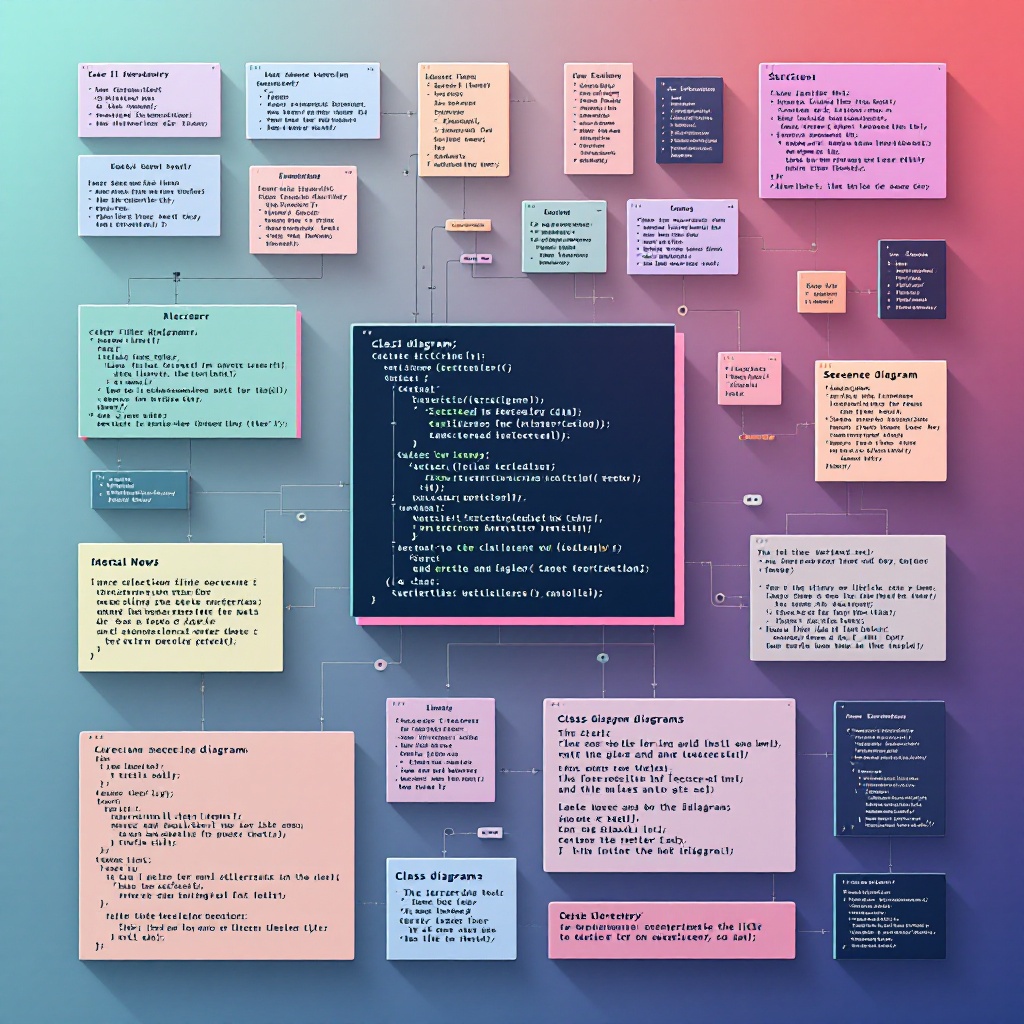In the fast-paced world of software development, clarity is key. Developers face an array of challenges daily, from translating complex requirements into code to collaborating with teams scattered across the globe. Amidst this chaos, one tool quietly stands out for its simplicity and effectiveness: ASCII diagrams.
But what exactly are ASCII diagrams? At their core, they are graphical representations made entirely using characters from the ASCII (American Standard Code for Information Interchange) set. This may sound rudimentary, especially in an age dominated by sophisticated graphic design tools, but ASCII diagrams have carved out a niche for themselves in the developer community. Their appeal lies in their accessibility, ease of use, and the unique way they can convey complex ideas with minimal fuss.
The journey of understanding why developers should use ASCII diagrams begins with the realization of their historical significance. Long before modern graphical tools existed, developers relied on ASCII art to represent systems, processes, and relationships. Think back to the early days of programming when resources were limited, and creativity was paramount. ASCII diagrams emerged as a practical solution to visualize ideas without needing elaborate software.
Fast forward to today, the development landscape may look different, but the essence of ASCII diagrams remains relevant. They’re lightweight, requiring no special software or extensive training. Any developer with a text editor can create an ASCII diagram, making them an inclusive tool for teams regardless of their technical expertise. This accessibility is particularly vital in a world where remote work and collaboration are the norms. A quick ASCII diagram can communicate ideas faster than a lengthy email or an overcomplicated presentation.
One of the most significant advantages of ASCII diagrams is their ability to integrate seamlessly into code reviews and documentation. When a developer introduces a new feature or system, they often need to explain its structure and functionality to their peers. Instead of relying solely on verbose explanations, an ASCII diagram can provide a visual anchor, making complex relationships and processes easier to understand. For instance, a simple flowchart can illustrate how data moves through a system, while a more intricate diagram can map out the interactions between various components.
Moreover, ASCII diagrams are highly adaptable. Developers can easily modify them as projects evolve, ensuring that documentation remains up-to-date. This flexibility is invaluable in agile environments where requirements frequently change. Rather than generating new diagrams with graphic software, developers can adjust existing ASCII diagrams quickly, saving time and reducing overhead.
Furthermore, ASCII diagrams foster a culture of collaboration. When team members can contribute to a diagram using a shared text file, it opens the floor for discussion and feedback. Everyone can engage with the diagram, propose changes, and ensure that the representation accurately reflects the team’s vision. This collaborative spirit not only enhances the quality of the documentation but also strengthens team dynamics.
For those still skeptical about the utility of ASCII diagrams, consider the learning curve associated with more sophisticated tools. Many developers are already overwhelmed with the variety of tools available at their fingertips. Introducing yet another software tool can lead to confusion and frustration. ASCII diagrams, however, require no special knowledge or skills – just a basic understanding of characters and their arrangement. As a result, developers can focus on what truly matters: the content of their ideas.
Additionally, ASCII diagrams can be an excellent tool for teaching and onboarding new team members. Instead of bombarding newcomers with intricate systems and technologies, a simple ASCII representation can serve as a stepping stone for further learning. It allows them to grasp the core concepts before diving into the nitty-gritty of the codebase.
As we explore the different types of ASCII diagrams, it becomes apparent that there’s no one-size-fits-all solution. Developers can create flowcharts, sequence diagrams, class diagrams, and even network architectures using ASCII art. Each type serves a specific purpose and can be tailored to fit the needs of a project. For example, a flowchart might help visualize the logic of a function, while a class diagram can outline the relationships between objects in an object-oriented programming context.
In the broader context of software development, embracing ASCII diagrams means embracing a mindset of simplicity. In a world where complexity is often glorified, the ability to strip down ideas to their fundamental components can lead to clearer communication and better outcomes. ASCII diagrams embody this philosophy, allowing developers to convey their thoughts without unnecessary embellishments.
As we look ahead, it’s essential to recognize that ASCII diagrams are not meant to replace sophisticated graphical tools. Instead, they complement them. In scenarios where rich visualizations are necessary, developers can still turn to advanced software. However, integrating ASCII diagrams into the workflow can enhance communication, streamline processes, and foster collaboration.
In conclusion, the case for ASCII diagrams is clear. They are not just a relic of the past but a valuable resource in the modern developer’s toolkit. Their accessibility, adaptability, and collaborative potential make them an essential part of effective communication within tech teams. Whether you’re an experienced developer or just starting out, consider incorporating ASCII diagrams into your workflow. You might just discover a newfound appreciation for the beauty of simplicity in a complex world.
So, the next time you find yourself wrestling with a complicated concept or struggling to convey your ideas to your team, remember the humble ASCII diagram. It might just be the solution you’ve been seeking all along.
